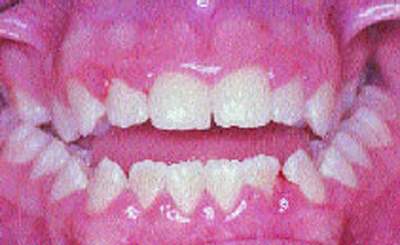
| Home |
| Women and Oral Health Mea A. Weinberg, D.M.D., M.S.D., R.Ph. US Pharmacist 27(9), 2002. © 2002 Jobson Publishing |

Figure 1. A 13-year old girl complained of bleeding when she brushed. Clinical examination revealed severe gingival inflammation characterized by enlarged and swollen (puffy) gingiva around the teeth. Puberty is notable for higher levels of sex hormones, which may produce transient gingival inflammation.
- Accumulation of dental plaque on teeth
- Pronounced inflamed gingiva
- Redness of gingiva
- Swelling of gingiva
- Bleeding of gingiva upon stimulation
- Reversible following puberty
- No radiographic bone loss
- Accumulation of plaque on teeth
- Modest inflammatory response of gingiva prior to ovulation
- No radiographic bone loss
- Reversible following ovulation
- Increased accumulation of plaque on teeth
- Onset in the second or third trimester
- Pronounced redness of gingiva
- Edematous (swollen) gingiva
- Bleeding of gingiva upon stimulation
- Reversible postpartum